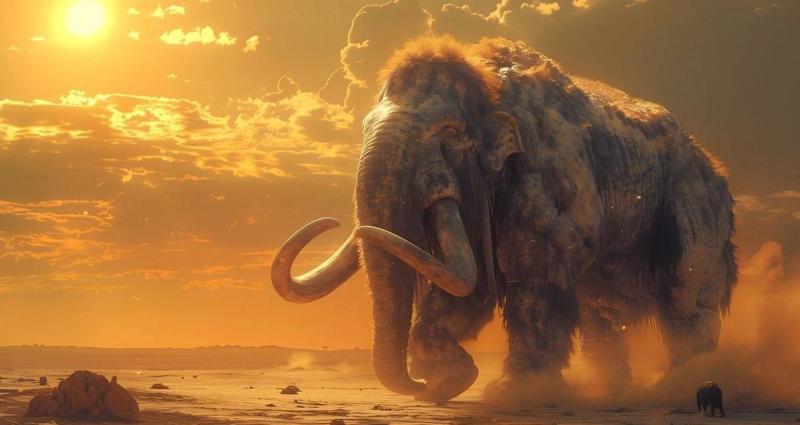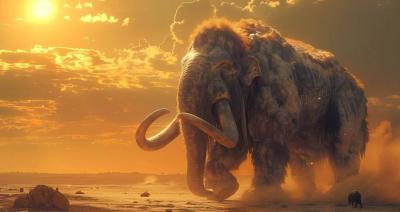The woolly mammoths were survivors on Wrangel Island. They became isolated on a landmass in the Arctic Ocean after rising sea levels cut them off from present-day Siberia, making them the last surviving species to go extinct. A new study published in the journal "Cell" challenges previous fossil records that interpreted the extinction of mammoths about 4,000 years ago as a classic case of inbreeding, where harmful genetic mutations spread rapidly through an isolated group of animals and led to their demise. Genetic diversity can be considered an insurance policy for species. If there are enough unrelated individuals in a population, there’s a good chance that one of them possesses a genetic trait that can protect it from a new threat. As long as this individual can pass on this trait to its offspring, the species can avoid extinction. However, when small isolated groups are forced to breed with each other over several generations, harmful mutations become inevitably concentrated. This phenomenon is known as mutational meltdown, capable of eliminating entire populations, according to a report by "The Economist".
Love Dalén and Marianne Dehasque at the Ancient DNA Laboratory in Sweden were curious if the Wrangel Island mammoths faced mutational meltdown. Given that Wrangel Island is dry and bitterly cold for most days of the year, the remains of woolly mammoths excavated there are often very well preserved. Even DNA, which deteriorates quickly in warm climates, can be collected from these samples. This allowed Dr. Dalén's team to study the genetic data of 14 mammoths that got stranded on the island. They then compared the genetic material of these animals with that of seven individuals who were alive in the area before rising sea levels cut them off.
Some of the mammoths died 4,333 years ago, while others perished 9,219 years ago, approximately 800 years after isolation from Wrangel Island. Similarities in DNA led researchers to conclude that about eight mammoths founded this population, likely corresponding to a single herd. Furthermore, references indicate that mammoths had already faced significant genetic challenges early on. However, remarkably, the most harmful mutations did not overwhelm the group. Instead, the mammoths suffering from severely harmful mutations either died or could not reproduce, leaving the remaining mammoths healthy. (Whether this was simply natural selection at work, or a result of mammoths choosing not to mate with sick individuals, remains to be seen).
A group of 200 to 300 mammoths lived in this relative stability for 6,000 years, displaying limited genetic diversity. Severely harmful mutations still affected some individuals, and moderately harmful mutations accumulated. Suddenly, the mammoths went extinct. Archaeologists found no evidence of humans on the island at that time, so they discount the likelihood of human hunting (although it is believed that humans hunted mammoths in places like North America). A tundra fire or a few seasons of adverse weather could have wiped them out as well, but the more likely possibility is that disease decimated them. One part of the Wrangel Island mammoth genome that was severely impacted by isolation is the major histocompatibility complex (MHC). This is a crucial part of the immune system that collects materials from pathogens and trains attacking cells to recognize them. Researchers believe that the MHC of the island mammoths lost 49.2% of its genetic diversity compared to non-isolated mammoths. Along with the accumulation of moderately harmful mutations, this significant decrease in genetic diversity likely made the mammoths susceptible to infections.




